Advanced Therapy Massage Lotion
Se connecter pour obtenir les prix des revendeurs
Biotone Advanced Therapy Massage Lotion offers excellent manipulation of skin and muscles allied with superb glide and easy workability.
Massage therapy is a widely recognized and valued modality in sports medicine, providing numerous benefits for athletes and individuals engaged in physical activities. To optimize the effectiveness of massage techniques, healthcare professionals often utilize various massage lotions, oils, creams, and gels. These specialized products play a vital role in enhancing the therapeutic touch, promoting relaxation, and supporting the recovery process.
Let’s explore the important role of massage lotions, oils, creams, and gels in sports medicine.
Massage lotions, oils, creams, and gels serve as lubricants, reducing friction between the therapist’s hands or tools and the client’s skin. This lubrication allows for smooth, fluid movements during massage, enhancing the therapist’s ability to apply techniques such as effleurage, petrissage, or deep tissue manipulation. The reduced friction also prevents uncomfortable pulling or dragging sensations, ensuring a more pleasant and effective massage experience.
Massage products are often formulated with ingredients that nourish and hydrate the skin. Essential oils, plant extracts, vitamins, and moisturizing agents in these products help to improve skin health and integrity. The skin is the body’s largest organ, and keeping it nourished and hydrated is crucial for its optimal function and appearance. Well-moisturized skin is more pliable, allowing the therapist to perform techniques with greater ease and efficacy.
Many massage lotions, oils, creams, and gels are infused with aromatic essential oils or fragrances. These scents can have a positive impact on the mind and body, promoting relaxation, reducing stress, and enhancing the overall massage experience. Aromatherapy, combined with the physical benefits of massage, creates a multi-sensory experience that further aids in relaxation and the release of tension.
Certain massage products contain ingredients like menthol, camphor, or arnica, which have analgesic or cooling properties. These ingredients provide a mild numbing or cooling sensation when applied to the skin, helping to reduce muscle soreness, alleviate pain, and provide relief from sports-related injuries. The cooling effect can also help reduce inflammation and swelling in injured tissues.
Different massage products have varying consistencies, textures, and absorption rates, allowing therapists to choose the most appropriate product for specific treatment goals. For example, oils are often used for longer, flowing strokes and general relaxation, while creams or gels may be preferred for deeper, more focused work on specific areas. The ability to select the right product enhances the therapist’s ability to customize treatments based on individual needs and conditions.
Massage lotions, oils, creams, and gels offer a wide range of choices, catering to individual preferences and sensitivities. Some individuals may prefer unscented products or have specific allergies or sensitivities that need to be taken into account. The availability of different formulations ensures that therapists can accommodate client preferences and provide a comfortable and enjoyable experience for each individual.
It is important to note that healthcare professionals should select massage products with high-quality ingredients, taking into consideration client allergies or sensitivities. They should also conduct patch tests or consult with clients about any potential adverse reactions before applying products to larger areas of the body.
In general, there are 3 properties of a massage lubricant that influence its effectiveness. These are “glide”, “friction” and absorption”. Below, we provide a more detailed explanation of what is meant by each of these concepts. We then explain the tradeoffs inherent in the choice of one type of massage lubricant over another.
The ideal massage lubricant needs to provide the “glide” property of an oil in order to give the therapist the freedom to apply deeper modalities when this is the appropriate choice. This would be important, for example, for a massage therapist performing longitudinal gliding therapy on a patient.
“Glide” refers to the technique of long gliding massage strokes in the direction of blood flow (longitudinal gliding). It is done to distribute fluid away from injured muscles in order to reduce inflammation and promote healing. Glide technique is used in many types of massage including Deep Tissue Massage, Swedish massage and deep longitudinal stripping.
At other times, the massage lubricant needs to possess the frictional property of a lotion. An example of this would be the application of transverse friction to tendon or ligament injuries in order to break down thickened scar tissue that may be causing pain to the patient.
This refers to the ability of the massage lubricant to be absorbed deeply in the patient’s tissues.
This property is important when applying massage techniques such as deep tissue massage.
There is no definitive answer to this question, as it depends on the type of massage technique that will be applied.
For example, if longitudinal gliding will be an important part of the therapy, “glide” will be an important property to have in the lubricant. On the other hand, as mentioned above, friction will be more important if transverse friction therapy will be an important component of the massage.
So in making the choice of massage lubricant, the therapist must balance several (sometimes conflicting) considerations.
In the next section, we will discuss these tradeoffs as they relate to the three main types of massage lubricant. We will also discuss the strengths and weaknesses of each lubricant in terms of patient comfort and convenience.
Massage lotions, creams and oils all offer health benefits. The choice of which to use comes down to preferences – both those of the patient and the therapist.
For the patient, the choice comes down to which lubricant is less annoying or distracting and most beneficial to skin appearance and health.
For the therapist, the decision is dependent on which lubricant will allow him or her to most effectively apply the chosen technique. As we have mentioned above, different massage techniques require different properties from the lubricant.
Longitudinal gliding therapy (for example) differs from deep tissue massage where the need for glide, absorbency and friction are concerned. Lotions, creams and oils differ in their abilities to support each of these objectives. Other things being equal, the massage therapist will prefer a lubricant that makes it easiest for him/her to deliver the chosen technique.
If you choose to use a lotion, be careful to ensure that it contains only natural products. Avoid lotions with synthetic chemicals or petroleum products, as many of these are being linked to serious health problems. Instead, go for a lotion with natural products only.
Having made this point, we will now briefly summarize the relative advantages of massage lotions, creams and oils / gels.
Massage lotions offer the following advantages as massage lubricants:
However, in choosing a lotion, be careful to look out for the following:
Massage oils have several advantages that are not available from lotions or creams:
However, massage oils also offer some drawbacks and we mention a couple of these below:
Massage creams are a compromise between the benefits of lotions and those of oils. They are less absorbent than lotions but provide less glide than oils. Generally, they are a good choice for treatment of muscle soreness and soft tissue injuries.
In conclusion, massage lotions, oils, creams, and gels are essential tools in sports medicine, enhancing the therapeutic benefits of massage therapy. By providing lubrication, nourishment, sensory enhancement, and targeted treatment focus, these products contribute to effective muscle relaxation and quicker rehabilitation from injury.
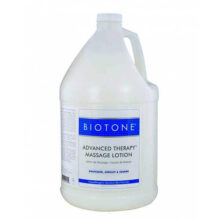
Se connecter pour obtenir les prix des revendeurs
Biotone Advanced Therapy Massage Lotion offers excellent manipulation of skin and muscles allied with superb glide and easy workability.
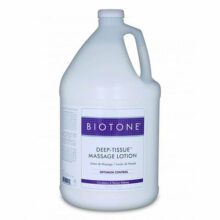
Se connecter pour obtenir les prix des revendeurs
Biotone Deep Tissue Massage Lotion allows you to avoid the glide of oils and creams and gain the manipulation you need to relieve deep knotted muscles and trigger points.
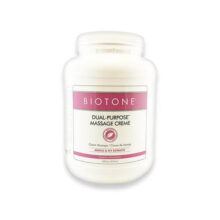
Se connecter pour obtenir les prix des revendeurs
Biotone Dual Purpose Massage Creme is a superior quality massage lubricant with a texture that makes it a suitable candidate for several massage modalities,
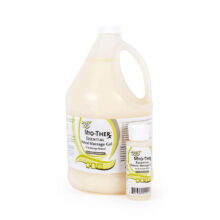
Se connecter pour obtenir les prix des revendeurs
Myo-Ther Massage Gel is a general purpose gel that is suitable for all massage techniques and offers excellent spreadability and workability.
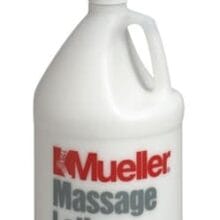
Se connecter pour obtenir les prix des revendeurs
La lotion de massage Mueller's est une lotion non parfumée qui permet un glissement en douceur sans laisser de sensation grasse.